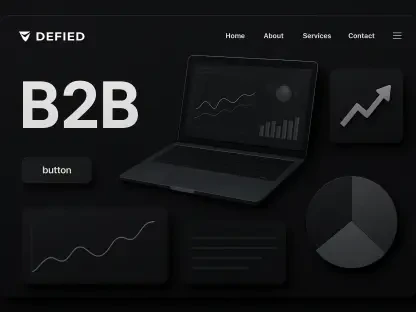Overview of the Streaming TV Advertising Landscape
The streaming TV, or Connected TV (CTV), advertising sector has emerged as a powerhouse in the digital marketing realm, with staggering growth reshaping how brands connect with audiences. As millions of households cut the cord on traditional cable, CTV platforms have become the go-to medium, commanding billions in ad spend and redefining viewer engagement. This seismic shift underscores the urgency for innovative tools and strategies to keep pace with an ever-evolving ecosystem.
Key players like Index Exchange, Netflix, Disney, and Microsoft are at the forefront, driving advancements and setting benchmarks for the industry. Index Exchange, as a leading supply-side platform (SSP), focuses on optimizing inventory value, while Netflix and Disney expand their programmatic offerings to capture larger market shares. Microsoft, with its robust ad tech infrastructure, complements these efforts by enhancing data-driven buying capabilities, collectively shaping a competitive and dynamic landscape.
Technological innovations, particularly programmatic advertising, have accelerated CTV’s rise, enabling automated, real-time ad placements that maximize efficiency. Coupled with a growing consumer preference for on-demand content, the industry sees significant investment, with CTV ad spending reaching monumental heights. Current estimates peg the market’s value at over $33 billion, reflecting its critical role in the broader digital advertising framework and the pressing need for precise measurement systems.
The Evolution of Measurement in Programmatic Advertising
Limitations of Traditional Metrics
Traditional impression-based metrics, long a staple in digital advertising, fall short when applied to the unique dynamics of streaming TV. These metrics treat every ad slot as equal, ignoring the critical factor of duration—whether an ad runs for 6 seconds or 30 seconds. This oversight distorts the true value delivered to both advertisers and publishers, creating inefficiencies in campaign assessment.
Catherine Cho, Lead Product Manager at Index Exchange, has emphasized the necessity for a paradigm shift in measurement approaches. According to Cho, the time variable in streaming ads demands a focus beyond mere slot counts, as legacy systems fail to capture the depth of viewer exposure. Such limitations hinder accurate performance evaluation, pushing the industry toward more nuanced solutions.
The discrepancy in value representation has sparked widespread concern among stakeholders seeking fairer and more reliable metrics. Advertisers often overpay for brief exposures, while publishers struggle to monetize longer, high-impact slots effectively. Addressing this gap is not just a technical challenge but a fundamental step in aligning measurement with the realities of streaming content consumption.
Market Trends and Growth Projections
Programmatic CTV advertising is witnessing an unprecedented surge, with marketers planning to significantly increase budget allocations over the coming years. Industry data indicates a doubling of programmatic CTV spend proportions, rising from current levels to 28% by 2027, signaling robust confidence in the channel’s potential. This trend reflects a broader shift toward automated buying as a cornerstone of advertising strategy.
Major platforms like Netflix and Disney are fueling this momentum through strategic partnerships and initiatives that expand programmatic access. Netflix has broadened its demand-side platform integrations, while Disney’s live streaming ad certification programs enhance real-time bidding capabilities. These developments highlight a collective push for scalability and innovation within the sector.
Looking ahead, the evolution of measurement practices aligns closely with market expansion and a heightened demand for transparency. As investment in CTV continues to climb, refined metrics promise to deliver clearer insights into campaign outcomes. This alignment ensures that growth is not only sustained but also optimized for maximum return on ad spend across diverse streaming environments.
Challenges in Streaming TV Measurement
Shifting from impression-based to duration-based metrics presents a range of technical and operational hurdles for the industry. Updating demand-side platform (DSP) and SSP reporting systems to accommodate time-based data requires significant infrastructure adjustments. Such changes demand both time and resources, posing a barrier to swift adoption across all market segments.
Beyond technical issues, market resistance to change adds another layer of complexity. Many stakeholders, accustomed to traditional metrics, exhibit reluctance to embrace new methodologies, fearing disruptions in established workflows. This inertia underscores the need for education and demonstration of tangible benefits to foster acceptance and drive transition.
Potential solutions, such as leveraging OpenRTB 2.6 standards for dynamic ad pod bidding, offer a pathway to overcome these challenges. By enabling precise duration tracking within flexible ad configurations, these standards facilitate a smoother integration of time-based metrics. Collaborative efforts among tech providers and industry bodies can further accelerate this shift, ensuring a unified approach to measurement evolution.
Regulatory and Compliance Considerations
The regulatory landscape for streaming TV advertising is increasingly complex, with data privacy laws shaping how data is collected and utilized. Stringent requirements around user consent and transparency compel platforms to prioritize ethical practices in programmatic transactions. Navigating these regulations is essential for maintaining trust and avoiding legal pitfalls in a highly scrutinized domain.
Duration-based metrics can play a pivotal role in enhancing accountability within this framework. By providing a clearer picture of ad exposure time, these metrics support compliance with transparency mandates, ensuring advertisers and publishers operate on verifiable data. This alignment with regulatory expectations strengthens the integrity of programmatic ecosystems.
Industry standards like OpenRTB 2.6 also contribute to consistent adoption of new measurement practices by establishing common protocols. These guidelines help harmonize reporting across platforms, reducing discrepancies and fostering a compliant environment. As regulations evolve, adherence to such standards will be crucial for sustaining innovation without compromising on legal or ethical obligations.
Future Directions for Streaming TV Advertising
Duration-based metrics represent a foundational step toward more sophisticated optimization algorithms centered on engagement time. By focusing on how long viewers interact with ads, future systems could refine targeting and creative strategies to maximize impact. This progression signals a deeper understanding of audience behavior in streaming contexts.
Emerging technologies, such as programmatic CTV pause ads and enhanced real-time bidding tools from companies like Wunderkind and Zillow, are poised to further transform the space. These innovations enable dynamic ad insertions and granular performance tracking, catering to the demand for seamless, relevant viewer experiences. Their integration into broader platforms will likely redefine advertising norms.
Consumer preferences are also shifting toward personalized, impactful ad formats, influencing the trajectory of measurement strategies. As audiences seek tailored content, metrics must evolve to prioritize quality over quantity, emphasizing meaningful interactions. Meanwhile, global economic conditions could affect CTV investment, with market fluctuations potentially accelerating or slowing tech adoption based on available budgets.
Conclusion and Industry Outlook
Reflecting on the strides made in streaming TV measurement, Index Exchange’s introduction of duration-based reporting stands as a landmark achievement. This innovation tackled longstanding gaps in legacy metrics, offering a more accurate lens through which advertisers and publishers evaluate performance. The shift to time-based assessments marked a turning point in aligning value with actual ad exposure.
For stakeholders, the path forward involves embracing these metrics to refine bid strategies and enhance campaign outcomes. Advertisers gain the ability to tailor approaches based on creative length, while publishers optimize revenue by reflecting true inventory worth. Collaborative adoption of supporting technologies, like OpenRTB 2.6, proves essential in overcoming initial hurdles.
Looking ahead, the industry is encouraged to invest in education and infrastructure updates to sustain this momentum. Prioritizing transparency and leveraging emerging tools promises to unlock further potential in CTV advertising. As the landscape continues to mature, proactive adaptation to evolving metrics and consumer expectations emerges as the key to maintaining a competitive edge.









